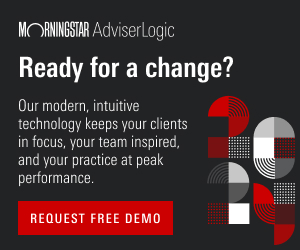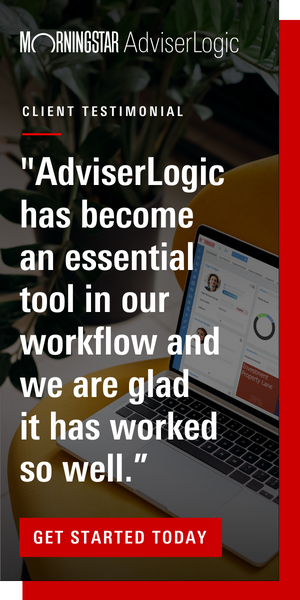
ADVICE TECHNOLOGY
From Cost to Value – Transforming How You Think About Advice Software
If you’re looking for a return on investment that goes beyond just cost considerations, upgrading your tech can be the ideal place to start.
 |
Ken Ong 14 February 2024 |
Coming out of the year-end break, it’s easy to get overwhelmed by the demands of a new year. From onboarding new clients to battling with dated systems that haven’t evolved with your practice, there are several concerns competing for the top of the to-do list. But advice software doesn’t have to be one of them – especially when your technology stack can save you dollars while saving you time. If you’re looking for a return on investment that goes beyond just cost considerations, upgrading your tech can be the ideal place to start.
1. Shifting Perspective: Software as an Investment Decision
In the quest for cost-effectiveness, financial advisers often undervalue the intrinsic value of software as an investment. Rather than viewing it solely through the lens of expenditure, consider it an essential tool that contributes to your business' growth. The key question to ask is, "Are you reaping sufficient returns from the system based on what you are paying for it?"
2. Calculating Return in Software: Time Saved
Traditionally, the return on investment is measured in dollar terms, but in the realm of financial planning software, the currency is time. Efficient advice software should translate into time saved. Evaluate the hours saved per month and assess their financial equivalent. For instance, if you save 3 hours a month using a particular software and your professional charge rate is $300 per hour, then the monthly value saved is $900.
3. Assessing Cost Justification: A Practical Example
Let's delve into a practical example to illuminate the concept. Suppose you’re using Morningstar AdviserLogic software and saving 3 hours monthly, equating to a value of $900. If the software costs less than $1200 per month, the investment is justifiable. However, if the cost surpasses the value saved, it's time to consider alternative solutions.
4. Beyond the Bottom Line: Additional Benefits
While cost is a crucial factor, it's vital to look beyond the bottom line. Consider the holistic benefits that the software offers. Does it enhance client interactions, streamline reporting, or provide insightful research and data analytics? These additional advantages contribute significantly to the overall return on investment.
5. Adapting to Changing Needs: When to Reassess Your Software
The financial advising landscape is dynamic, and so are your business needs. Regularly reassess your software to ensure it aligns with your evolving requirements. If your current system falls short in delivering maximum efficiency and value, it may be time to explore alternative solutions.
6. Making the Change: A Thoughtful Approach
Changing software systems is a significant decision. Before making the switch, conduct a thorough evaluation of potential alternatives. Consider factors such as features, user-friendliness, and scalability. Additionally, seek input from team members to ensure a seamless transition and minimal disruptions to daily operations.
In the pursuit of cost-effectiveness, financial advisers must adopt a strategic mindset, treating software as a valuable investment rather than a mere expense. By assessing the time saved and ensuring it surpasses the associated costs, advisers can make informed decisions that not only enhance efficiency but also contribute to long-term business success. Regularly reassessing software solutions ensures alignment with evolving business needs, guaranteeing that the tools in place continue to deliver the maximum value.
Ken Ong is Associate Director of Product – Financial Planning at Morningstar Australasia Pty Ltd.
It's time to level up in 2024
Break free from slow tech, outdated functionality, and endless paperwork.
|
|
|
© Copyright 2025 Morningstar Inc. | Privacy Policy | Legal Notices | Regulatory Disclosures | Global Contacts
Disclaimer: Morningstar, Inc. All rights reserved. Neither Morningstar, its affiliates, nor the content providers guarantee the data or content contained herein to be accurate, complete or timely nor will they have any liability for its use or distribution. Any general advice has been prepared without reference to your financial objectives, situation or needs. You should consider the advice in light of these matters and if applicable, the relevant Product Disclosure Statement before making any decision to invest. Morningstar Australasia Pty Limited (MAPL) (ABN 95 090 665 544, AFS Licence 240892) and/or Morningstar Research Ltd, are subsidiaries of Morningstar, Inc., a leading provider of independent investment research in North America, Europe, Australia, and Asia. For more information refer to the MAPL Financial Services Guide (AU). Morningstar Investment Management Australia Limited (MIMAL) (ABN 54 071 808 501, AFS Licence 22896) is the Responsible Entity and issuer of the Morningstar Investment Funds. For more information refer to the MIMAL Financial Services Guide. MAPL and MRL avoid conflicts of interest by not undertaking or publishing qualitative analyst research on MIMAL’s investment products. |

